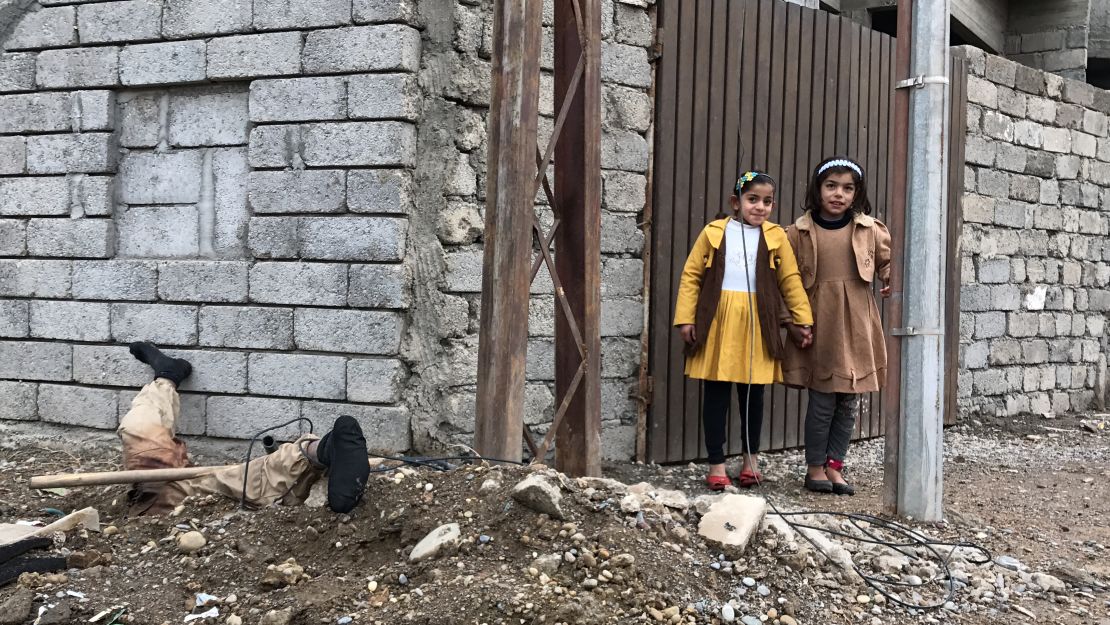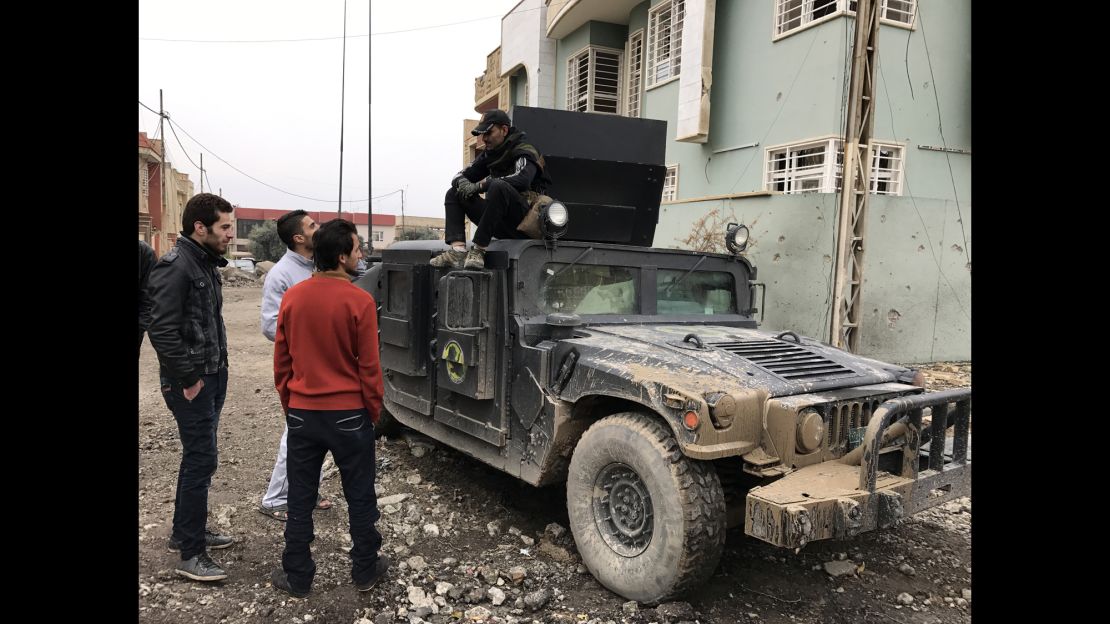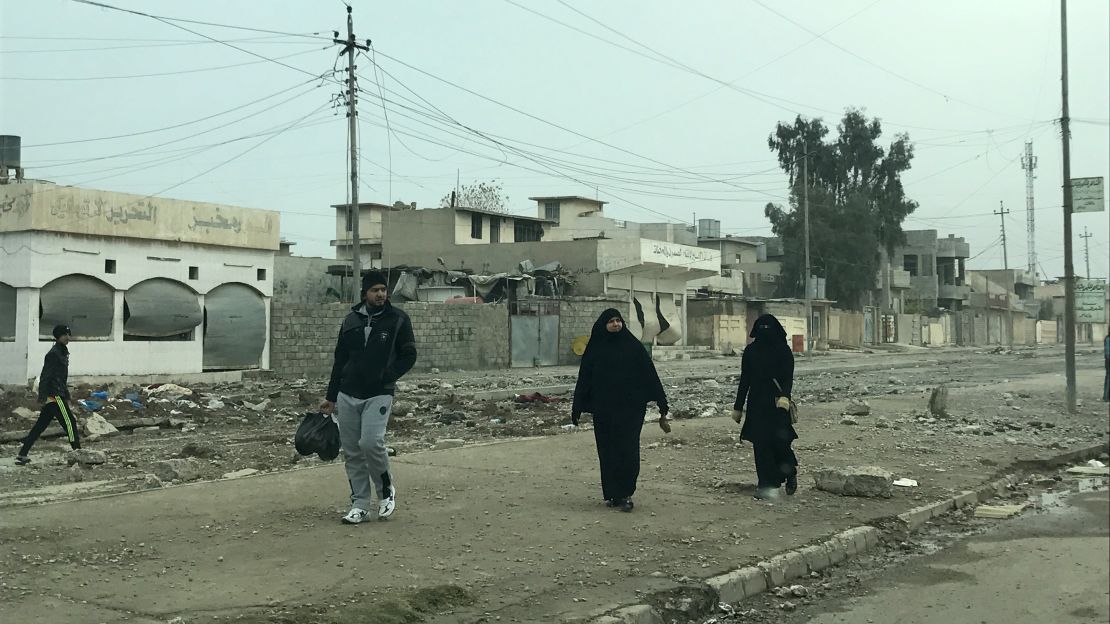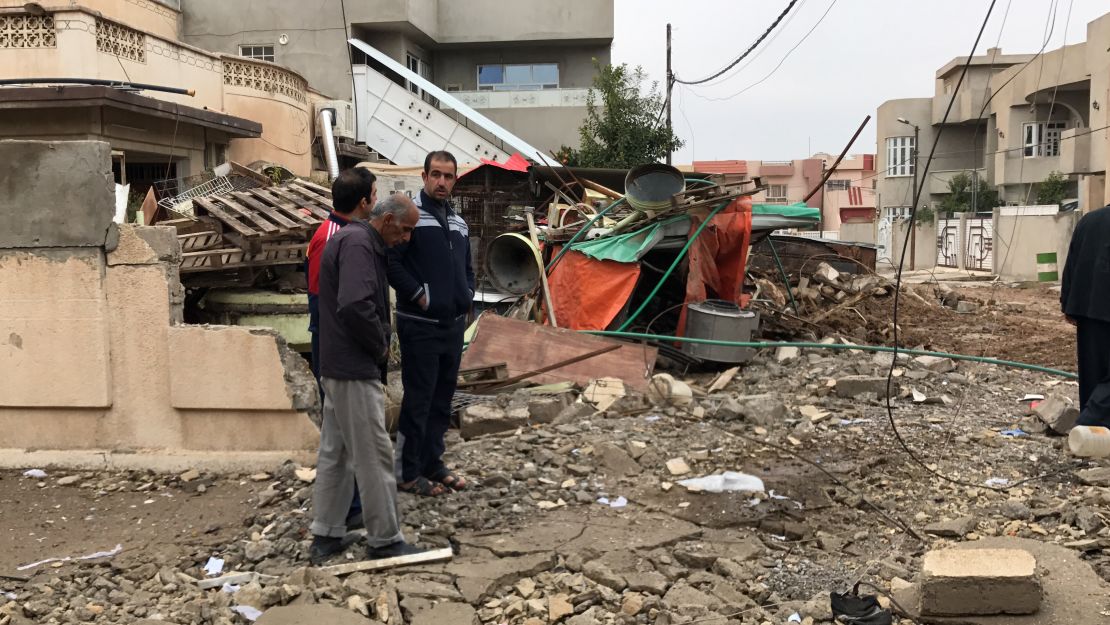Story highlights
Resident: 'Here there is danger, on the other side there is danger'
Presence of so many civilians complicates Iraq strategy in Mosul
The two boys, aged 11 or 12, milled around the street corner, chatting with journalists and soldiers.
They paid no notice to the two legs in bloodstained combat fatigues jutting spread-eagle out of a hole next to a lamppost, ending in black-stockinged feet.
The legs belonged to a dead ISIS fighter, said a man who only identified himself as Abu Saif, a former teacher.
“He was from around here, an Iraqi from Mosul. The soldiers killed him,” he said with nonchalance. “And there’s another body underneath his. He was a foreign jihadi.”
Troops from Iraq’s elite Counter-Terrorism Service (CTS) drove ISIS out of the eastern Mosul district of Al-Barid about a week ago. ISIS had been in control of the city for more than two years.

The atmosphere was relaxed, despite the occasional rattle of machine gun fire nearby.
Children giggled at the CNN crew – “I like your scarf,” one told me with a laugh – while others wandered around surveying the damage.
If not for the corpse on the corner, the soldiers, the dozen or so Humvees jamming the street, the destruction all around us, the constant roar of warplanes high above and the crack of gunfire, it would have seemed like an almost-normal day in the neighborhood.

Ready to die in their homes
The front line was a few minutes’ walk away, and death even closer. Just a few hours after our visit, an ISIS sniper killed an Iraqi soldier in the same neighborhood.
Despite it all, many of the residents of Al-Barid stayed in their homes during the fighting, and are determined to stay as the battle rages.
Abu Saif, the former teacher, put it this way. “We hung on because we knew the displaced (persons) camps are uninhabitable. We accepted that either we die in our homes or we make it out alive.”

We walked over rubble and through the splintered front door of one home, and found a family sifting through their belongings.
The mother called herself Um Ahmed. (Many people are anxious not to give their real names because of fear of ISIS reprisals against relatives in parts of Mosul occupied by the extremists.)
She and her family had moved to a safer neighborhood when the fighting began, and had just moments before returned home. While they were away, a rocket landed just outside their front door, shattering the windows.
When I asked Um Ahmed how she felt when she discovered the damage, her face twisted in pain. “Put yourself in my place,” she responded, trying to hold back tears. “We didn’t want to lose our home.”
Despite the lack of electricity, the broken windows and the cold outside, she said they would sleep in their beds that night.
Her husband, Abu Ahmed, was stoic about the risks of returning.
“Here there is danger, on the other side there is danger,” he said. “All Mosul is inflamed. If we die here, this is our place. It is God’s will.”
Out of Mosul, into limbo: Refugees flee ISIS
Aiming to avoid another disaster
I’ve covered a variety of major urban battles during Iraq’s war against ISIS – Baiji, Tikrit and Falluja – and in those cases the civilians fled as soon as they could.
They often ended up in poorly equipped, poorly supplied camps hastily set up by the Iraqi authorities and international relief groups.
Last summer, outside Falluja, we reported on thousands of people who had fled the fighting, only to find themselves in desert camps without shelter from the sweltering heat, without protection from violent sand storms.
In preparing for the Mosul offensive, the Baghdad government took a different approach.
In the weeks leading up to the start of operations, the air force dropped hundreds of thousands of leaflets on the city, urging residents to stay in their homes as long as they felt safe. Many had already heard about the humanitarian disaster that happened with the battle of Falluja, and thus heeded the government’s call.

Officials say at least 1 million civilians are still in Mosul.
CTS Gen. Abdal Ghani Al-Asadi conceded that the presence of so many civilians in the midst of an ongoing battle is complicating matters.
“Yes, they have slowed down our operations,” he told me while inspecting a building that ISIS had turned into a training facility in the Barid district. “But we are following orders from the prime minister, who told us the preserving the lives of civilians comes first, and then the fight against ISIS.”
Back on the street, Radwan, a man in his mid-40s wearing a track suit under a leather jacket, was strolling with his son in front of their bullet-pocked house.
“We can put up with this,” he said with a shrug. “What choice do we have?”















